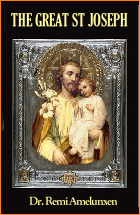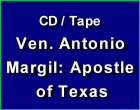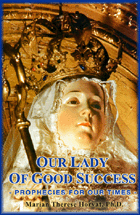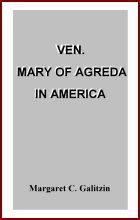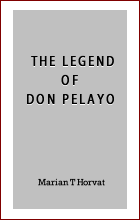American History
 |
 |
 |
 |
 |
 |
 |
The Livingston Ghost
In the 1790s the German Lutheran family of Adam Livingston, made of quiet unimaginative farmers with no fanaticism, was living
near present day Middleway, West Virginia. It began to experience inexplicable occurrences after a certain incident.
One day Adam took into his house a wandering stranger who was near death. The man begged that a Catholic priest be sent for, a request Mr. Livingston disregarded because of his Lutheran aversion to priests. The man died that night and Adam Livingston buried him on the property.
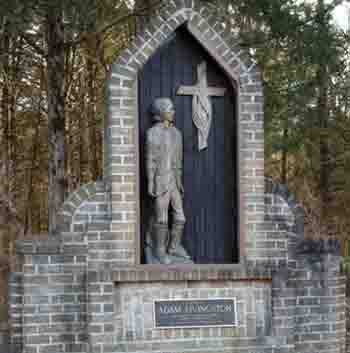 Shortly afterwards, strange happenings started. His barns inexplicably burned down, his livestock began to die and uncountable thunderous hammerings could be heard at all hours in the house. Furniture moved by itself and crockery smashed to the floor.
Shortly afterwards, strange happenings started. His barns inexplicably burned down, his livestock began to die and uncountable thunderous hammerings could be heard at all hours in the house. Furniture moved by itself and crockery smashed to the floor.
Even more unsettling was the clipping. It was almost impossible to keep a sheet of paper or piece of cloth whole in the house without having it torn or shredded. Bedding, shirts, dresses and documents in the house would be shredded or cut into crescent shapes.
Sometimes the clipping occurred to clothing even while on the person. One Presbyterian lady indignantly recounted how her best hat had been torn to pieces while on her head as she made a call of friendly inquisitiveness. So notorious had these eerie actions become that the small farm village itself came to be called Cliptown, and the house "the wizard's clip," in reference to the clipped cloth.
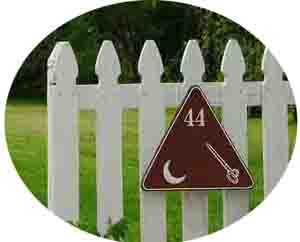 Mr. Livingston, reading in his Bible that Christ had given to his ministers power over evil spirits, turned to his Lutheran minister, who brought a volume of Protestant tracts to read and make the house holy. In his very hands the tracts were torn to pieces. He fled and later admitted it was not in his power to banish the evil spirit in the house.
Mr. Livingston, reading in his Bible that Christ had given to his ministers power over evil spirits, turned to his Lutheran minister, who brought a volume of Protestant tracts to read and make the house holy. In his very hands the tracts were torn to pieces. He fled and later admitted it was not in his power to banish the evil spirit in the house.
When Mr. Livingston insisted that he must have that power for he had found it in his Bible, the parson replied that this power only existed in old times, but was done away with now.
Livingston turned to an Episcopal minister and, then, to a Methodist, but both were met with flying stones. He even tired a local “conjurer,” who likewise had no success.
Mr. Livingston thereupon had a dream where he saw a "minister dressed in peculiar robes" atop a mountain. A voice he claimed was the same as that of the dying beggar spoke to him, saying: "This is the man who will bring you relief."
His Catholic neighbor Richard McSherry recognized the clothing described to him as that of a Catholic priest at the altar. He told Livingston that there was a Catholic priest lodging overnight in a farmhouse in the neighboring town, and together they went there to seek his help. When Livingston saw Fr. Dennis Cahill, the pastor of a church at Hagerstown, Maryland, 20 miles north of Cliptown, he cried out, “There is the man!” (from his dream).
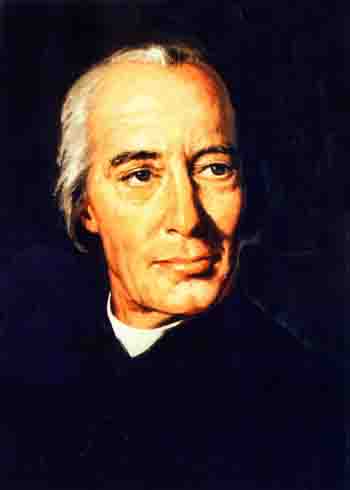 The sensible-minded Fr. Cahill did not relish making a detour to Ciptown over something he considered to be Lutheran nonsense. However, he agreed to accompany them to the house. En route a purse of money slipped from his pocket, causing him great consternation, for he was a practical man and funds were hard to come by for Catholic communities in Protestant Colonial America.
The sensible-minded Fr. Cahill did not relish making a detour to Ciptown over something he considered to be Lutheran nonsense. However, he agreed to accompany them to the house. En route a purse of money slipped from his pocket, causing him great consternation, for he was a practical man and funds were hard to come by for Catholic communities in Protestant Colonial America.
He entered the house in this distracted mood, blessed it and sprinkled it with Holy Water. On his way out, to his surprise, he found the bag of lost coins at the doorway. After this hasty sprinkling of the house, there were for a year or so no disturbances in it.
Then they began again. This time Mr. Livingston did not hesitate. He immediately called Fr. Cahill, who did not feel he was adequately prepared to make an exorcism. He had recourse to the most renowned and scholarly priest of the area, Fr. Demitrius Augustine Gallitzin, the Russian Prince who had come to the Allegheny Mountains at age 22 to become a priest, found the town of Lorreto and act as its pastor until the end of his life (1770-1840).
Fr. Gallitzin was skeptical of the reports of a demonic presence. He rode the 60 miles and entered the house, only to be met by a thunderous roar, as of innumerable wagons. He called for Fr. Cahill and together they performed an exorcism. A Mass was said, and an immediate and lasting calm descended.
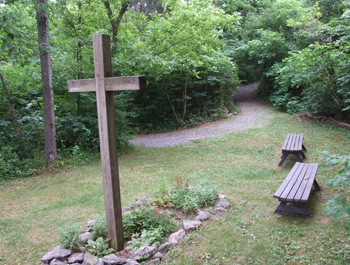 Fr. Gallitzin stayed on in the region for three months, living with the Irish neighbor McSherry, in order to make an accurate report of the whole affair to the Bishop. He interviewed many residents and spoke often to Livingston, who affirmed that he had continued to hear "the Voice," as he called it, the voice of the man in the dream who had told him to find a priest. The voice taught Adam Livingston many things about the Catholic doctrine of Purgatory and other mysteries of the Faith, teachings that Fr. Gallitzin recognized as perfectly accurate.
Fr. Gallitzin stayed on in the region for three months, living with the Irish neighbor McSherry, in order to make an accurate report of the whole affair to the Bishop. He interviewed many residents and spoke often to Livingston, who affirmed that he had continued to hear "the Voice," as he called it, the voice of the man in the dream who had told him to find a priest. The voice taught Adam Livingston many things about the Catholic doctrine of Purgatory and other mysteries of the Faith, teachings that Fr. Gallitzin recognized as perfectly accurate.
Before Fr. Gallitzin departed from Cliptown, Livingston and his wife and a half-dozen others from this region had become Catholics.
Time passed, the story continued to be told, and many others converted from Protestantism to the Catholic Faith. (1)

One day Adam took into his house a wandering stranger who was near death. The man begged that a Catholic priest be sent for, a request Mr. Livingston disregarded because of his Lutheran aversion to priests. The man died that night and Adam Livingston buried him on the property.

A memorial to Livingston was raised on the property he left to the Catholic Church on his death
Even more unsettling was the clipping. It was almost impossible to keep a sheet of paper or piece of cloth whole in the house without having it torn or shredded. Bedding, shirts, dresses and documents in the house would be shredded or cut into crescent shapes.
Sometimes the clipping occurred to clothing even while on the person. One Presbyterian lady indignantly recounted how her best hat had been torn to pieces while on her head as she made a call of friendly inquisitiveness. So notorious had these eerie actions become that the small farm village itself came to be called Cliptown, and the house "the wizard's clip," in reference to the clipped cloth.

Until today markers with a clippers & crescent moon are around Livingston house
When Mr. Livingston insisted that he must have that power for he had found it in his Bible, the parson replied that this power only existed in old times, but was done away with now.
Livingston turned to an Episcopal minister and, then, to a Methodist, but both were met with flying stones. He even tired a local “conjurer,” who likewise had no success.
Mr. Livingston thereupon had a dream where he saw a "minister dressed in peculiar robes" atop a mountain. A voice he claimed was the same as that of the dying beggar spoke to him, saying: "This is the man who will bring you relief."
His Catholic neighbor Richard McSherry recognized the clothing described to him as that of a Catholic priest at the altar. He told Livingston that there was a Catholic priest lodging overnight in a farmhouse in the neighboring town, and together they went there to seek his help. When Livingston saw Fr. Dennis Cahill, the pastor of a church at Hagerstown, Maryland, 20 miles north of Cliptown, he cried out, “There is the man!” (from his dream).

Fr. Demitrius Galitzin, a Russian prince become priest, carefully reported the whole incident
He entered the house in this distracted mood, blessed it and sprinkled it with Holy Water. On his way out, to his surprise, he found the bag of lost coins at the doorway. After this hasty sprinkling of the house, there were for a year or so no disturbances in it.
Then they began again. This time Mr. Livingston did not hesitate. He immediately called Fr. Cahill, who did not feel he was adequately prepared to make an exorcism. He had recourse to the most renowned and scholarly priest of the area, Fr. Demitrius Augustine Gallitzin, the Russian Prince who had come to the Allegheny Mountains at age 22 to become a priest, found the town of Lorreto and act as its pastor until the end of his life (1770-1840).
Fr. Gallitzin was skeptical of the reports of a demonic presence. He rode the 60 miles and entered the house, only to be met by a thunderous roar, as of innumerable wagons. He called for Fr. Cahill and together they performed an exorcism. A Mass was said, and an immediate and lasting calm descended.

The Stranger's Grave is still maintained on Livingston's property in a plot called Priest's Field
Before Fr. Gallitzin departed from Cliptown, Livingston and his wife and a half-dozen others from this region had become Catholics.
Time passed, the story continued to be told, and many others converted from Protestantism to the Catholic Faith. (1)
- Quotes and facts were drawn from the well-documented Mitri, or Story of Prince Demetrius Augustine Gallitzin 1770-1840, by Daniel Sargent, NY: Longmans, Green & Co., 1945, pp. 113-16, 126, 146, 199.

Posted January 15, 2020
______________________
______________________



